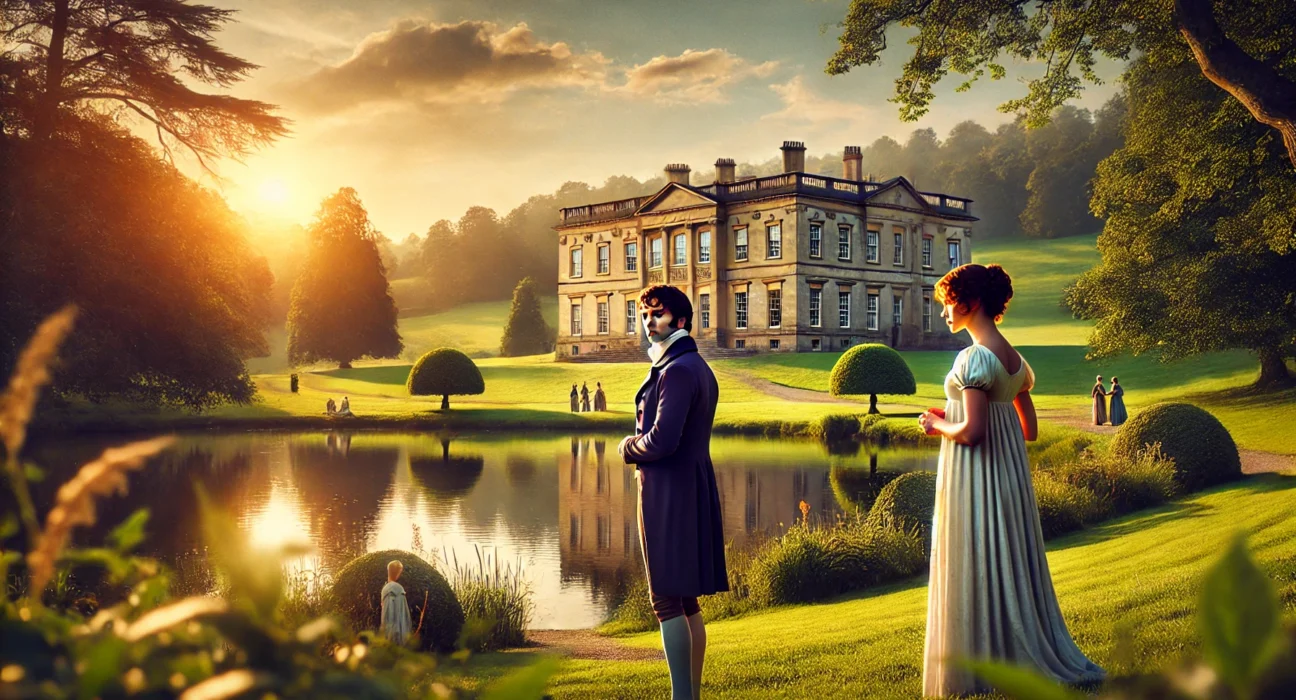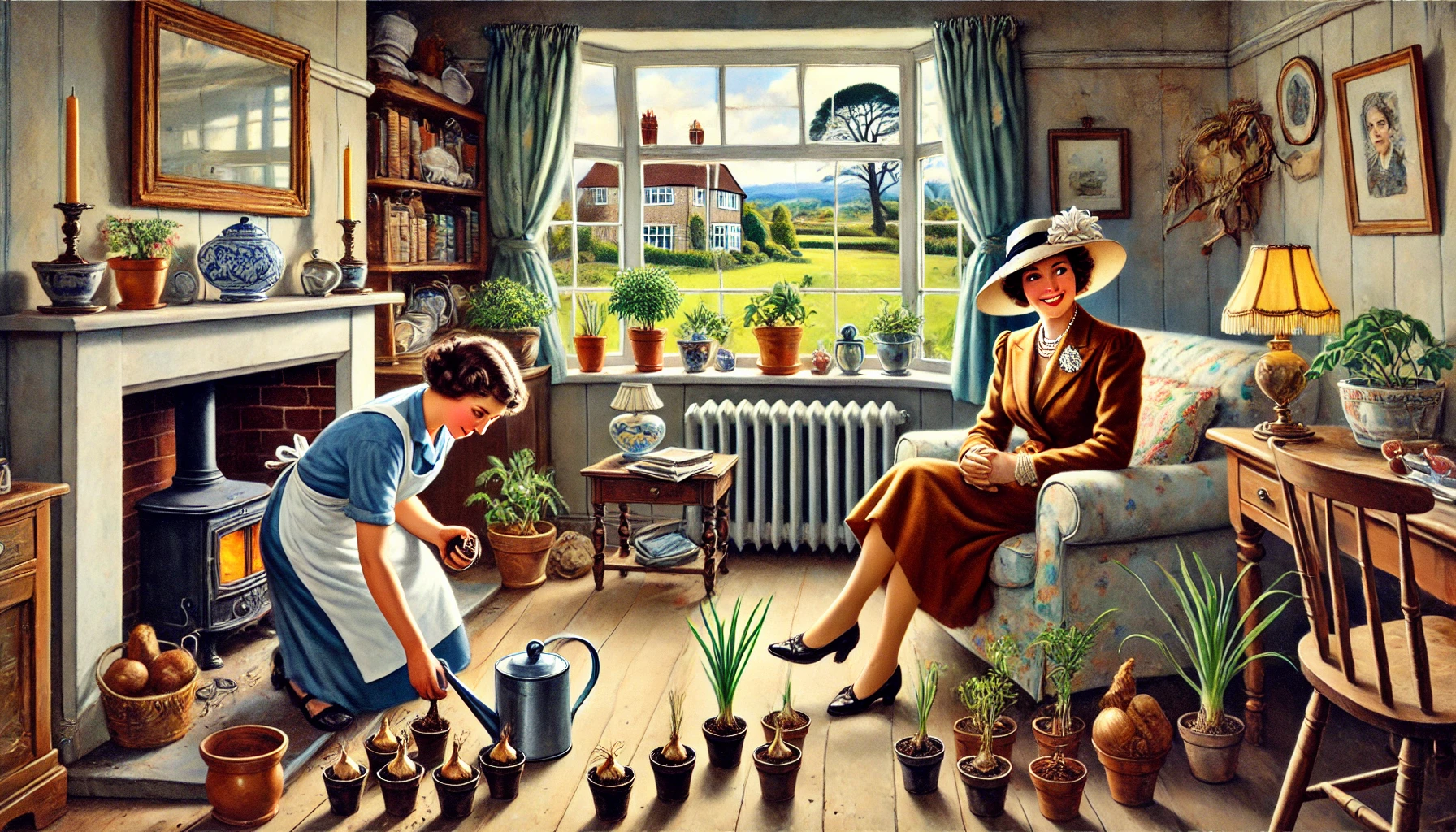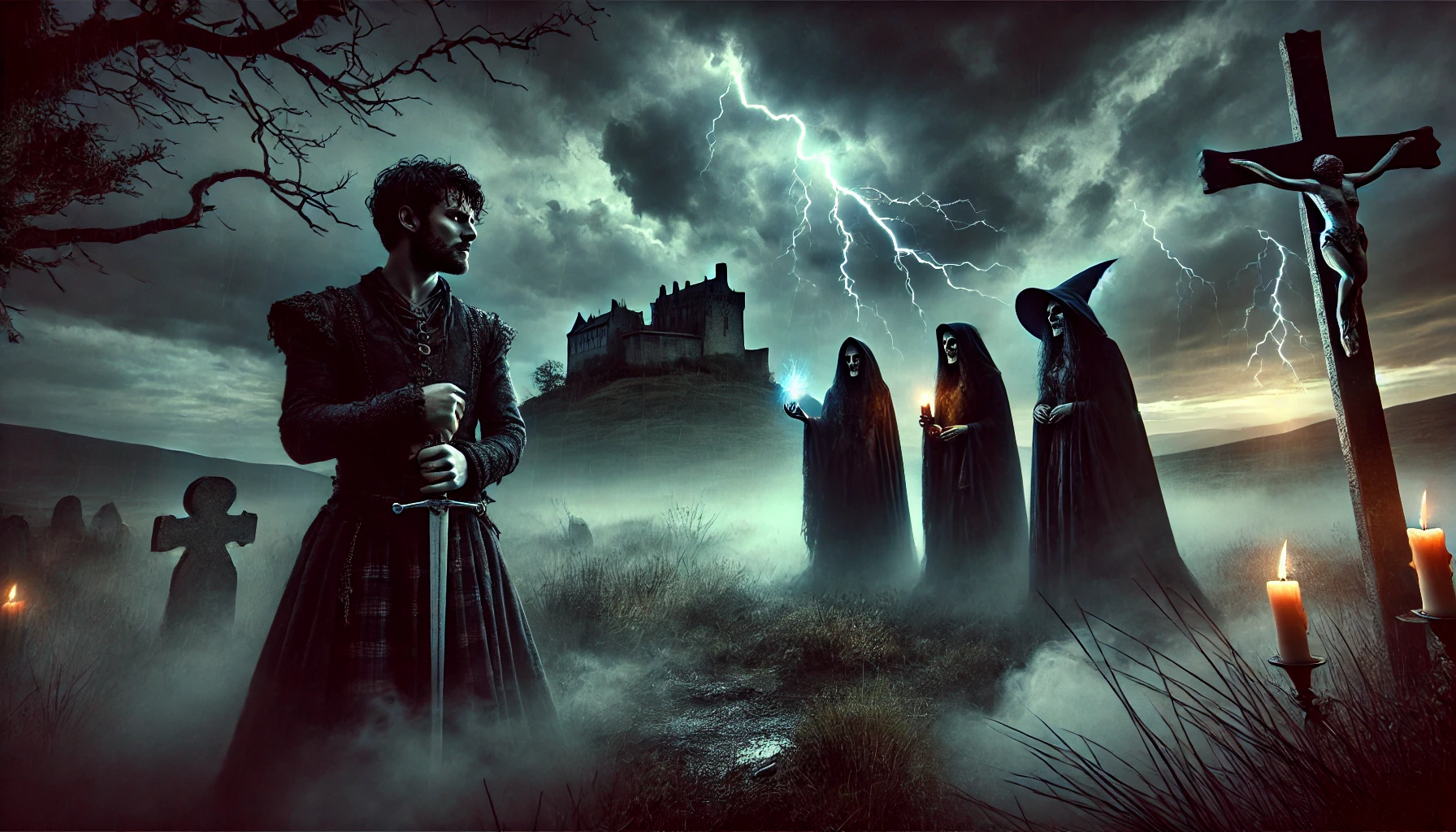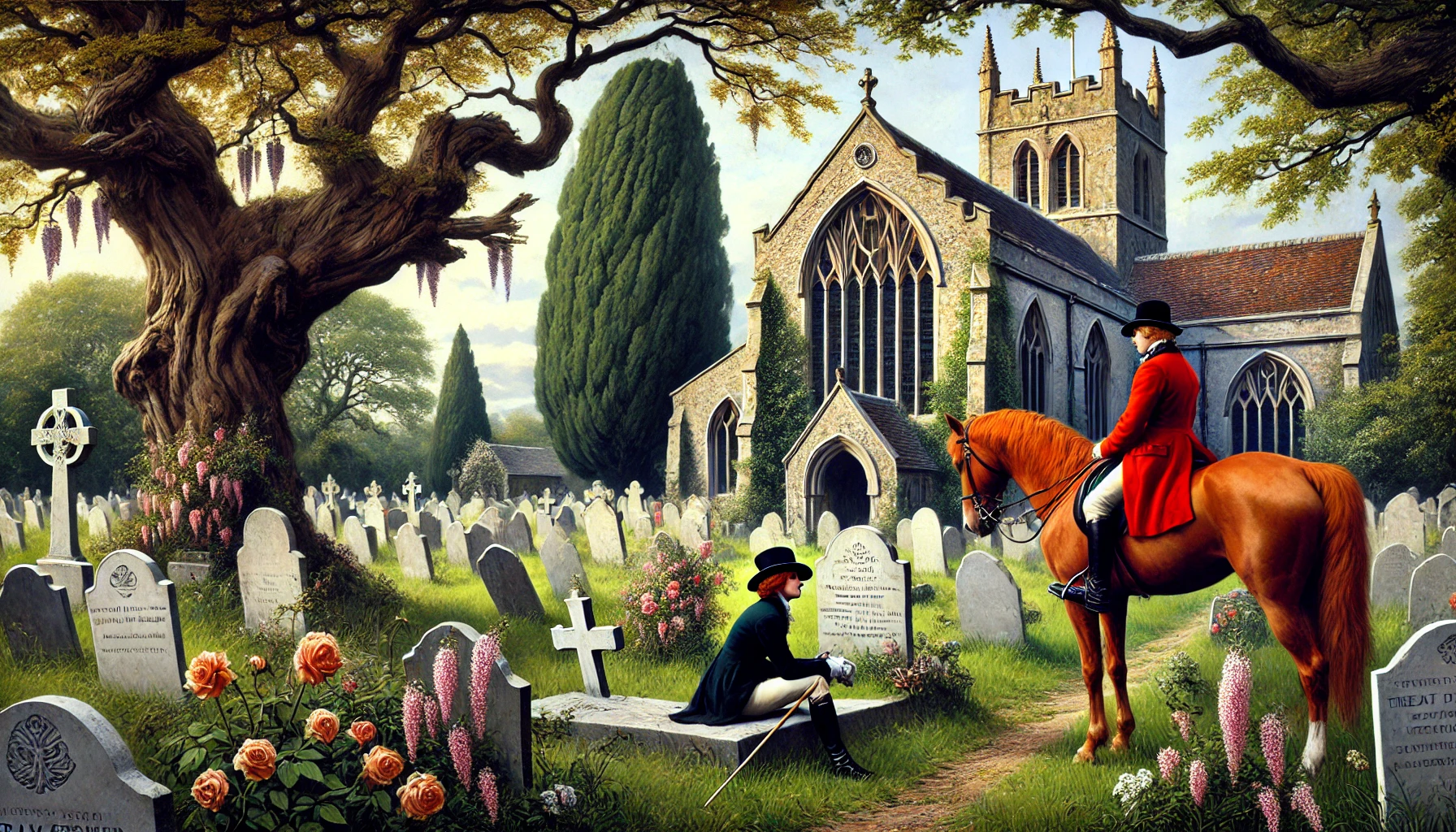Pride and Prejudice, written by Jane Austen and first published in 1813, is one of the most beloved works of English literature. It is a romantic novel that also serves as a biting social commentary on the British landed gentry at the turn of the 19th century. The story centers around Elizabeth Bennet, a witty and independent young woman, and her evolving relationship with the proud and wealthy Mr. Darcy. Austen’s sharp wit, memorable characters, and keen observations of social dynamics have made Pride and Prejudice an enduring classic.
Plot Summary
The Bennet family of Longbourn, Hertfordshire, lives in relative comfort but faces the pressing issue of securing the futures of five daughters: Jane, Elizabeth, Mary, Catherine (Kitty), and Lydia. With no male heir to inherit the estate, Mrs. Bennet is desperate to see her daughters married, especially to men of wealth and status. The family’s life takes an exciting turn when news spreads that a wealthy young man, Mr. Bingley, has taken residence at Netherfield Park, a nearby estate.
From the moment the Bennets meet Mr. Bingley, it becomes apparent that he is everything a gentleman should be: handsome, affable, and wealthy. At a local ball, Bingley quickly takes an interest in the eldest Bennet daughter, Jane, whose beauty and gentle nature captivate him. His close friend, Mr. Darcy, also attends the ball, but his reserved manner and aloofness earn him the scorn of the local community. Elizabeth Bennet, in particular, is unimpressed by Darcy, especially after overhearing him dismiss her as “not handsome enough to tempt” him.
As Bingley and Jane grow closer, Elizabeth forms an acquaintance with the charming Mr. Wickham, an officer in the local militia. Wickham tells Elizabeth a tale of woe, claiming that Darcy cheated him out of an inheritance. This revelation deepens Elizabeth’s dislike for Darcy, reinforcing her belief that he is proud and unjust. Meanwhile, Mr. Collins, a distant cousin and heir to the Bennet estate, arrives at Longbourn with the intention of proposing to one of the Bennet sisters. When Elizabeth refuses his awkward proposal, Mr. Collins quickly shifts his attentions to her friend Charlotte Lucas, who accepts him out of practicality.
In the midst of these developments, Jane is invited to Netherfield, but her visit is extended when she falls ill. Elizabeth walks several miles to Netherfield to care for her, raising the disapproval of Bingley’s sisters, who look down on the Bennet family’s lack of wealth and refinement. Mr. Darcy, however, is quietly drawn to Elizabeth’s wit, intelligence, and liveliness, though she remains unaware of his growing admiration.
The dynamics shift further when Bingley and his party abruptly leave Netherfield for London, leaving Jane heartbroken. Elizabeth suspects that Darcy and Bingley’s sisters have conspired to separate the couple due to Jane’s lower social standing. Elizabeth soon visits Charlotte, now married to Mr. Collins, at their home in Kent. There, she meets Lady Catherine de Bourgh, Mr. Darcy’s imperious aunt, who takes an immediate interest in Elizabeth but treats her with condescension.
During Elizabeth’s stay, Mr. Darcy unexpectedly visits Lady Catherine and proposes to Elizabeth. However, his proposal is far from romantic. Darcy acknowledges his love for her, but also insults her family and social standing in the process. Shocked and offended, Elizabeth rejects him outright, citing his role in separating Jane and Bingley and his mistreatment of Wickham as reasons for her refusal.
The next day, Darcy delivers a letter to Elizabeth, explaining his actions. He reveals that Wickham is not the victim he claimed to be but a gambler who tried to elope with Darcy’s younger sister for her fortune. Darcy also clarifies that he intervened in Jane and Bingley’s relationship because he believed Jane was indifferent to Bingley, and he wanted to protect his friend from heartache. Elizabeth begins to reconsider her judgments, recognizing that her prejudice against Darcy may have blinded her to the truth.
After returning home, Elizabeth joins her family in receiving some troubling news. Lydia, the youngest Bennet sister, has eloped with Wickham, risking the family’s reputation. The elopement threatens to bring scandal and ruin, but Darcy quietly intervenes, tracking down the couple and convincing Wickham to marry Lydia. He does so at great personal expense, but he keeps his involvement a secret.
Soon after, Bingley returns to Netherfield, and his affection for Jane is rekindled. This time, without interference, he proposes to her, and she accepts. As the Bennet family celebrates Jane’s engagement, Lady Catherine de Bourgh visits Elizabeth to demand that she refuse any future proposal from Darcy, as she expects Darcy to marry her own daughter. Elizabeth refuses to comply, asserting her independence.
Shortly afterward, Darcy proposes to Elizabeth again, this time with genuine humility and affection. He tells her how her rejection spurred him to change, to reconsider his pride and his behavior. Elizabeth, having seen his true character through his actions—especially in saving her family from disgrace—accepts his proposal. They marry, and with both Jane and Elizabeth happily wed, the Bennet family’s future is secured.
Elizabeth and Darcy’s marriage blossoms, built on mutual respect, love, and a shared recognition of their own past faults. The novel closes with the couple living at Darcy’s grand estate of Pemberley, where Elizabeth’s wit and Darcy’s warmth create a harmonious and fulfilling life together.
Main Characters
Elizabeth Bennet – The novel’s protagonist, Elizabeth is the second eldest of the Bennet sisters. She is intelligent, sharp-tongued, and independent, known for her wit and self-assurance. Elizabeth’s arc revolves around her initial prejudices, especially toward Mr. Darcy, and how she learns to see beyond first impressions.
Fitzwilliam Darcy (Mr. Darcy) – A wealthy and reserved man with a reputation for being aloof and proud, Mr. Darcy initially alienates many with his cold demeanor. However, as the novel progresses, his true character is revealed: honorable, kind, and deeply loyal. His pride is both his flaw and strength, but it’s his love for Elizabeth that ultimately transforms him.
Jane Bennet – The eldest Bennet sister, Jane is beautiful, kind, and gentle, often contrasting with Elizabeth’s more fiery personality. Jane’s romance with Mr. Bingley is a subplot that complements the central relationship between Elizabeth and Darcy.
Charles Bingley – Mr. Bingley is Darcy’s wealthy and friendly best friend. He is amiable and easygoing, but his lack of resolve and susceptibility to influence (especially from Darcy and his sisters) causes complications in his relationship with Jane.
Mrs. Bennet – The mother of the Bennet sisters, Mrs. Bennet is obsessed with marrying off her daughters to secure their futures. Her lack of social grace and frivolity often embarrasses her family, but her concerns reflect the societal pressures on women of the time.
Mr. Bennet – Elizabeth’s father, Mr. Bennet, is sarcastic and often detached from his family’s affairs. He takes a particular liking to Elizabeth but can be ineffective as a parent, failing to guide or correct his more wayward daughters.
Lydia Bennet – The youngest Bennet sister, Lydia is frivolous, immature, and headstrong. Her elopement with Mr. Wickham creates a scandal and serves as a major turning point in the novel.
George Wickham – A charming but deceitful militia officer, Wickham deceives Elizabeth and others about his true nature. He plays a pivotal role in both Elizabeth’s and Darcy’s story arcs.
Charlotte Lucas – Elizabeth’s pragmatic best friend, Charlotte marries the ridiculous Mr. Collins for financial security. Her choice highlights the limited options available to women during this period.
Lady Catherine de Bourgh – Mr. Darcy’s wealthy and domineering aunt, Lady Catherine embodies the upper-class arrogance and entitlement that Elizabeth rebels against.
Theme
Pride and Prejudice – The title reflects two key themes. Mr. Darcy’s pride in his social status and Elizabeth’s prejudice against him due to his aloof behavior are central to the misunderstandings between them. The novel explores how these traits blind characters from seeing the truth about others and themselves.
Marriage and Social Class – Austen critiques the institution of marriage, particularly how it was influenced by social class and economic considerations. Through the various marriages in the novel—from the shallow, financially-driven union of Charlotte and Mr. Collins to the deep emotional connection between Elizabeth and Darcy—Austen shows the complexities and societal pressures surrounding marriage.
First Impressions – The novel is filled with instances where first impressions turn out to be misleading. Elizabeth misjudges Darcy as being arrogant and Wickham as being charming, but as she gains more insight, she revises her opinions. The theme encourages readers to look beyond surface appearances.
Social Expectations and Gender Roles – Austen explores the limitations placed on women in a patriarchal society. The Bennet sisters, especially Elizabeth, are subject to societal pressures that push them toward marriage as a means of securing their futures. The novel critiques the way women’s choices were restricted and how social expectations dictated behavior.
Class and Hierarchy – The tension between characters of different social classes plays a significant role in the story. Elizabeth’s middle-class status makes her an unsuitable match for Mr. Darcy in the eyes of society, particularly Lady Catherine de Bourgh. Austen critiques the rigid class distinctions that dictate relationships and personal worth.
Writing Style and Tone
Jane Austen’s writing in Pride and Prejudice is renowned for its wit, irony, and social commentary. She employs free indirect discourse, a narrative technique that allows the narrator to slip into and out of a character’s thoughts without explicitly signaling the shift. This technique helps Austen convey Elizabeth’s inner life with subtlety, particularly her growing awareness of her feelings for Darcy. Her use of irony, especially through Elizabeth and Mr. Bennet, is a hallmark of her style. It allows for sharp critiques of societal norms while maintaining a light, often humorous tone.
Austen’s tone is primarily one of understated humor and satire. She deftly pokes fun at the absurdities of social expectations, particularly those related to marriage and gender roles. However, her tone also shifts to more serious, introspective moments, especially as Elizabeth and Darcy confront their flaws. This balance of wit and warmth gives the novel its lasting charm.
Austen’s language is precise and elegant, characteristic of Regency-era English, yet it remains accessible due to its clarity and directness. Her dialogue is sharp and often serves to reveal the deeper truths of characters, showcasing her ability to create complex, relatable individuals with just a few well-chosen words.
We hope this summary has sparked your interest and would appreciate you following Celsius 233 on social media:
There’s a treasure trove of other fascinating book summaries waiting for you. Check out our collection of stories that inspire, thrill, and provoke thought, just like this one by checking out the Book Shelf or the Library
Remember, while our summaries capture the essence, they can never replace the full experience of reading the book. If this summary intrigued you, consider diving into the complete story – buy the book and immerse yourself in the author’s original work.
If you want to request a book summary, click here.
When Saurabh is not working/watching football/reading books/traveling, you can reach him via Twitter/X, LinkedIn, or Threads
Restart reading!








